Rhythm Brings Order to Your Outdoor Space
How Landscape and Architecture Set the Tempo in Space
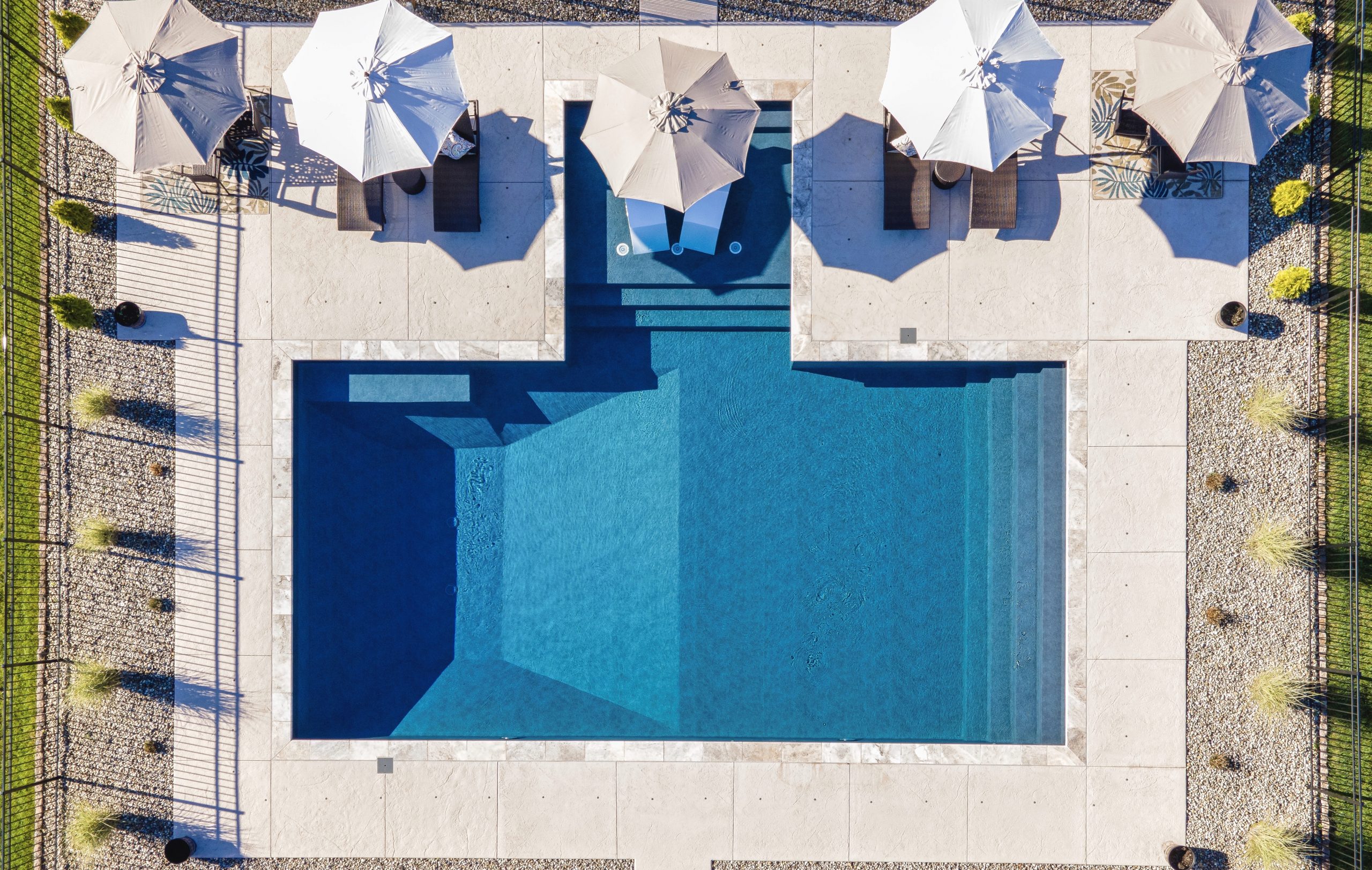
Classic modern pool design: You can feel the sophisticated rhythm in the balanced symphony of pool and patio shapes. Even the lounges join in the conversation of straight lines and right angles. The
umbrellas, set in a graceful arc, offer a counterpoint with their triangular, not-quite circular shapes.
Much as Emphasis sets the stage and brings focus to your WaterSpace, Rhythm—the fourth of Six Principles of Design—helps to coordinate all the pieces. Rhythm provides an underlying tempo that people sense. Without rhythm the world around is chaos.
Space as a place of comfort and order
When you plan a landscape, you use Rhythm to bring order to all the elements. Rhythm eliminates confusion. It helps guide us on our journey through a space. Its effect is physical and mental—like a green light, a stop sign, or crosswalk directing drivers and pedestrians.
We’ll discuss motion in greater detail in the next installment on Movement, the fifth Principle of Design. The two principles are so closely related they are often lumped together. For both rhythm and movement, the hardest part is applying familiar musical ideas in unfamiliar ways to landscapes and architecture:
• Sensing Rhythm beyond its sounds
• Seeing Movement in a medley of structural and natural elements that stand still
An Invitation to Dance
The rhythm you create in your space sets the tempo. The beat can be fast, slow, moderate, or change from one location to another within a designed space.
Like dance music, the rhythm of a space provides signals people intuitively comprehend. You simply feel the rhythm. As you follow the beat, you unconsciously synchronize your feelings and thoughts to harmonize with the space. You may even find yourself coordinating your movements with others who occupy the space.
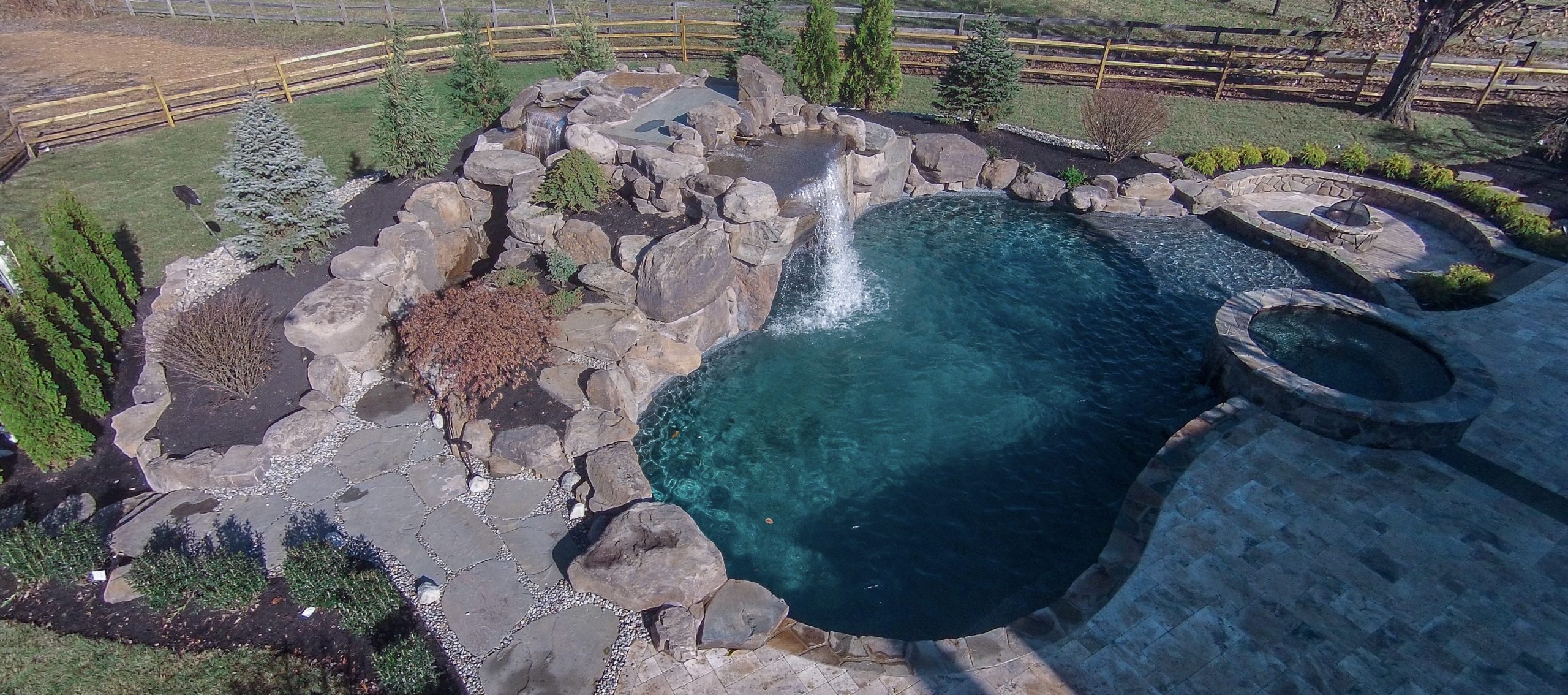
Natural stone and falling water: In contrast to the formal tone and straight lines of classic modernism, this WaterSpace sets an informal, natural tone with circles and curvilinear forms found in nature.
How Landscape and Architectural Rhythm Set the Tempo in Space
Rhythm is repetition. Like good dance music, rhythmic landscape architecture needs a repetitive, consistent beat that sets the tempo. You achieve consistency in the way you place elements and how they relate to one another. To keep the beat, you repeat the relationship you’ve established using the same elements. You can also employ different elements that relate in the same manner.
Note how the entire composition in the above design is held together through the colors and texture of natural stone. The smooth patio tile and coping at the pool’s edge repeat the colors of the rough textured stone. The fire pit at far right repeats the circular shaped spa area. The natural shapes of the large boulders—and the complete assemblage of of stones that create the waterfall—all repeat the pool’s informal curves.
Remember that you’re designing in three dimensions. The rhythms you create need to repeat up and down, left and right, near and far. You also need to account for how your composition’s look and feel changes in tone and character as you move through it.
Rhythm, Movement and the Music of Space
Some say rhythm is movement. But it’s a special kind of movement: movement synchronized by the space you’re occupying in a particular moment, by the path you’re following, and in coordination with those who have joined the journey. It’s the music of space. A silent rhythm that sets a spacial tone.
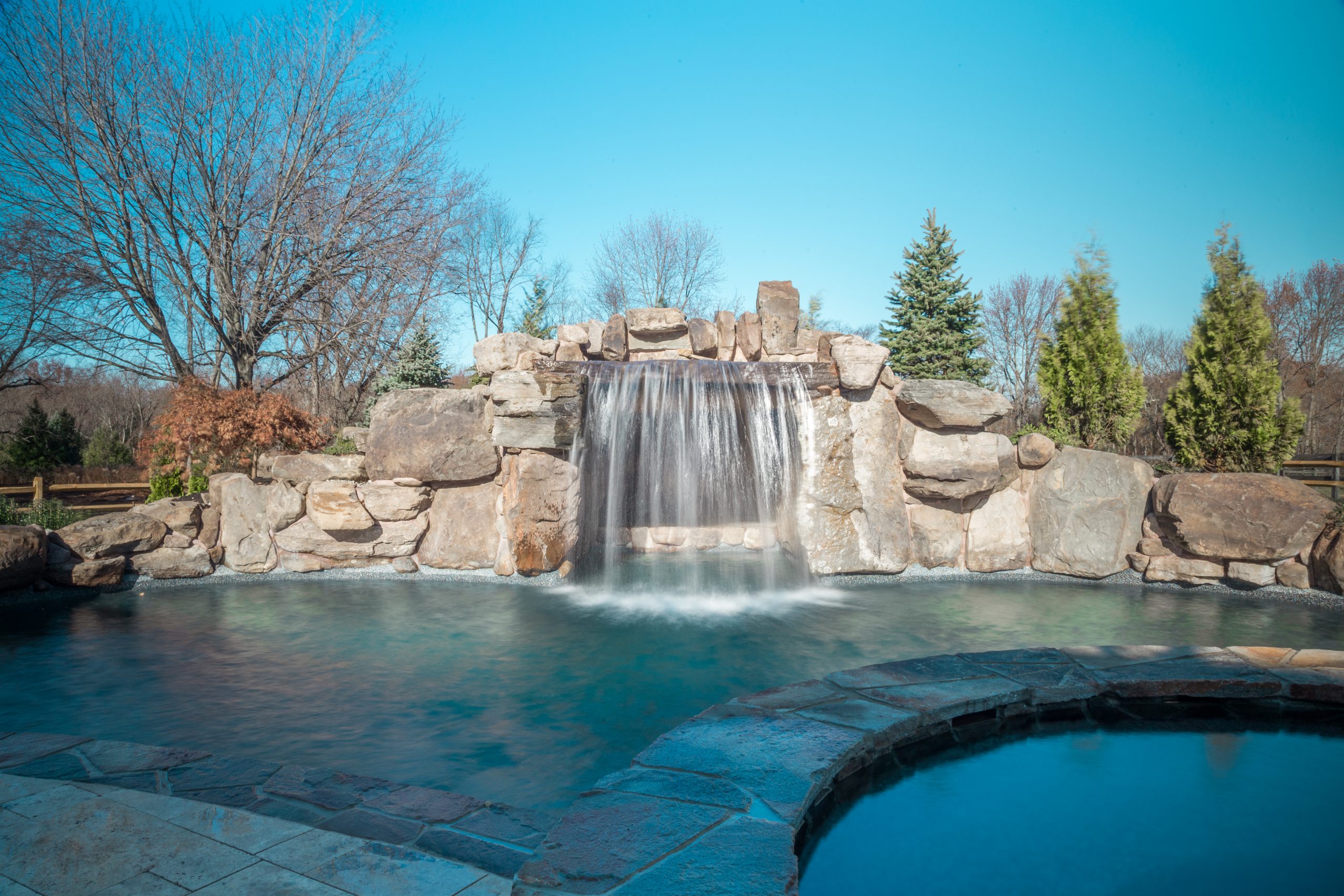
Rhythm in stone and water: Boulders rise from the ground to lift a waterfall high above the pool. Note how the design creates a rhythmic wave in stone, rising and falling in harmony with the falling water.
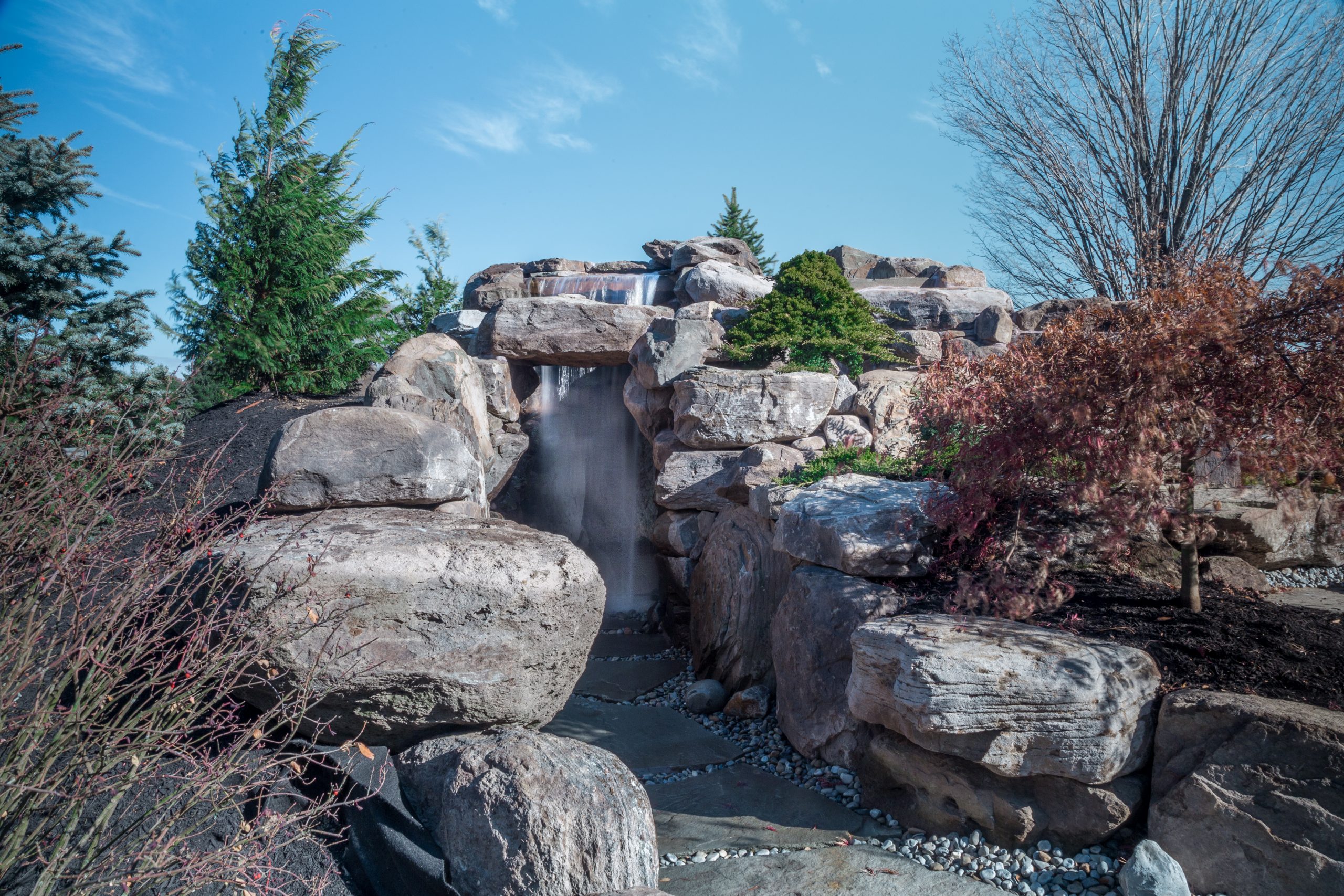
A hidden path: To the left of the falls facing the pool a hidden path takes you to a second waterfall.
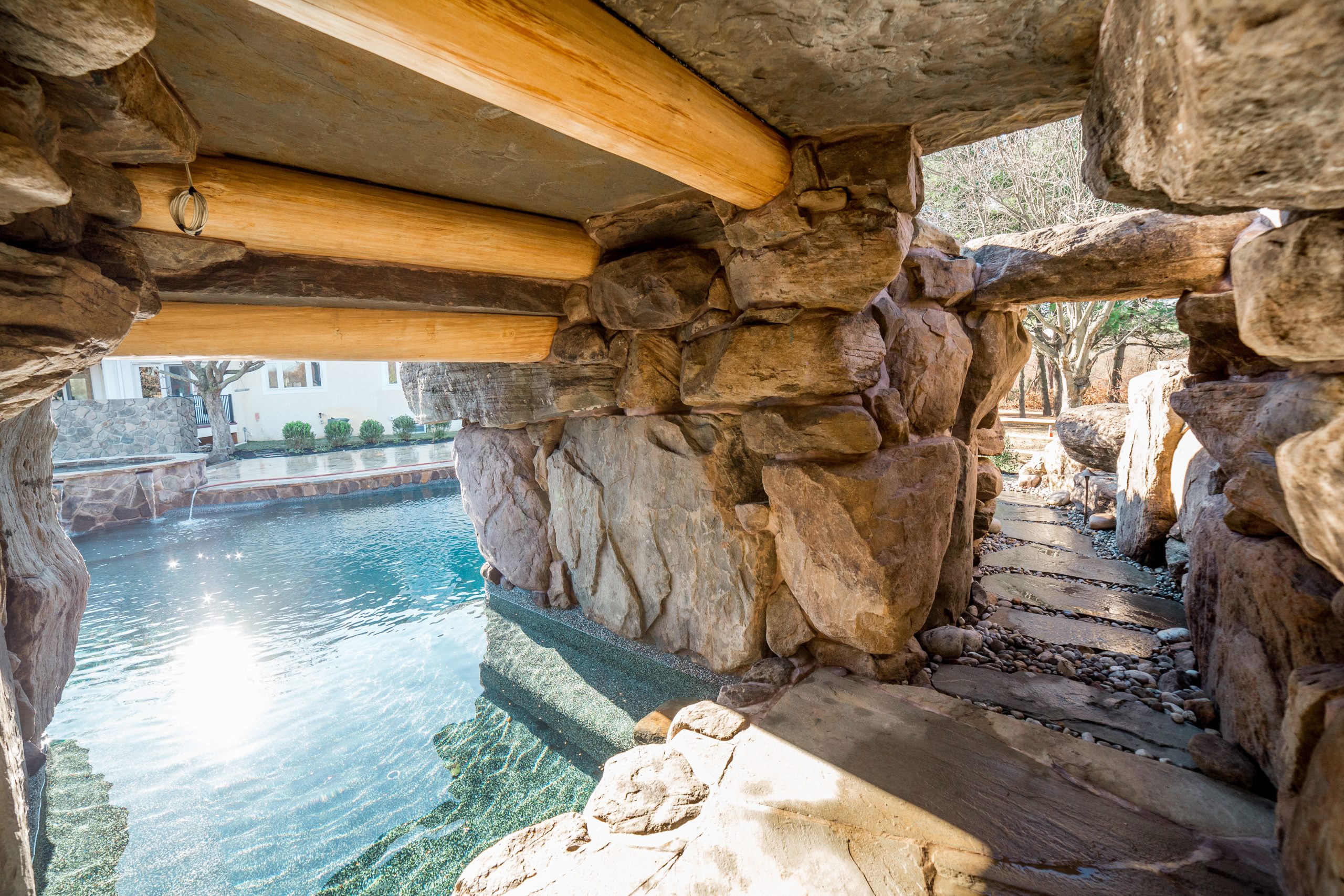
To a hidden grotto: Your path takes you through the falling water and inside to a grotto, hidden behind two walls of falling water—except when the falls are turned off for our photographer.
As we described in our discussion of the Blue Mind, there is something about water that draws us to it. And when it’s moving water—a gentle trickle of a small fountain, a rushing stream, an ocean tide, or a powerful waterfall—our attention turns to feelings ranging from peace to awe to joy. That’s the goal of the WaterSpaces we build: for you to simply enjoy.

